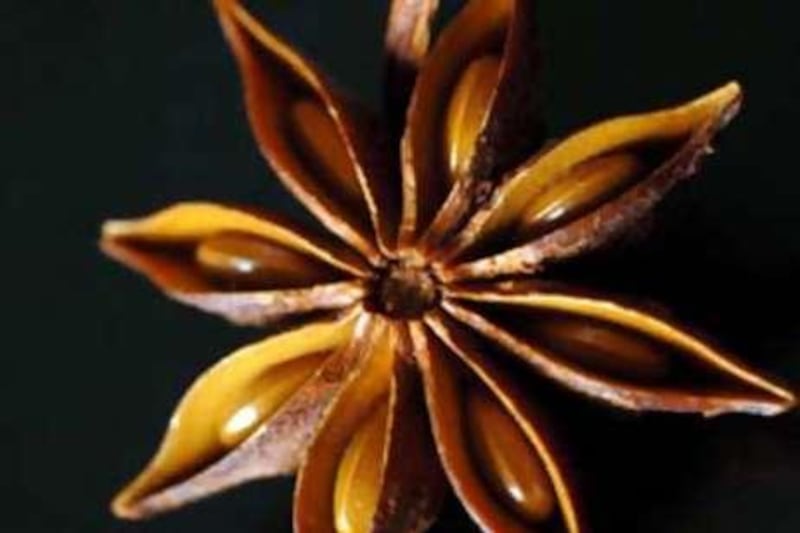Of all the household spices that lay claim to curative and medicinal properties, star anise has perhaps been the most hardworking. Not only has it been used for centuries to aid digestion, cure colic and ease the symptoms of rheumatism, but more recently it has been widely exploited in treating influenza - bird flu in particular. Star anise contains the shikimic acid used to create the anti-flu medicine Tamiflu, which has been used extensively around the world since the first outbreak of the H5N1 strain of avian flu in 1997. So widely was it used, in fact, that in 2005 there was a global shortage of star anise before scientists found a way of producing shikimic acid artificially, although it is still estimated that up to 90 per cent of star anise is still used to produce Tamiflu.
When it comes to home remedies, however, caution must be exercised. While Chinese star anise is safe when used to make herbal tea, Japanese star anise has been known to induce vomiting, seizures and severe cases of the jitters. In fact, the highly toxic Japanese variety contains anisatin and sikimitoxin, which can inflame the kidneys and the digestive organs. No wonder the Japanese burn their star anise as incense. But how do you tell the difference between the two? The answer is with great difficulty. Both Japanese and Chinese star anise are identical in appearance, yet the Japanese variety has a milder fragrance than its Chinese counterpart, and is thought to smell more like cardamom seeds than aniseed.
The familiar flavour and bouquet of Chinese star anise makes it a key ingredient in six-spice powder (along with cinnamon, ginger root, cloves, fennel seeds and peppercorns), which is used to bring many Chinese recipes to life. Indeed, the star shaped spice with eight points is the fruit of an evergreen magnolia tree native to China. The fruits are picked before they are ripe and then dried in the sun, which is when they acquire their characteristic rusty brown colour. It is better to buy star anise whole rather than in ground form - it retains its distinctive flavour for longer this way, and the attractive stars can be used as a garnish.
While star anise is synonymous with Chinese cuisine, it's also cultivated extensively in India, where it features in another ubiquitous powdered spice blend, garam masala. In Vietnam, it's used in the popular soup noodle dish "pho", and in Thailand it's ground and boiled up with cloves, vanilla pods, orange blossom water, cinnamon and black tea leaves to make Thai iced tea. Make yourself a few gallons of the stuff, get comfy on the settee under your duvet and crank up the TV for the day. Frankly, we can't think of a better way to ward off the dreaded flu.





